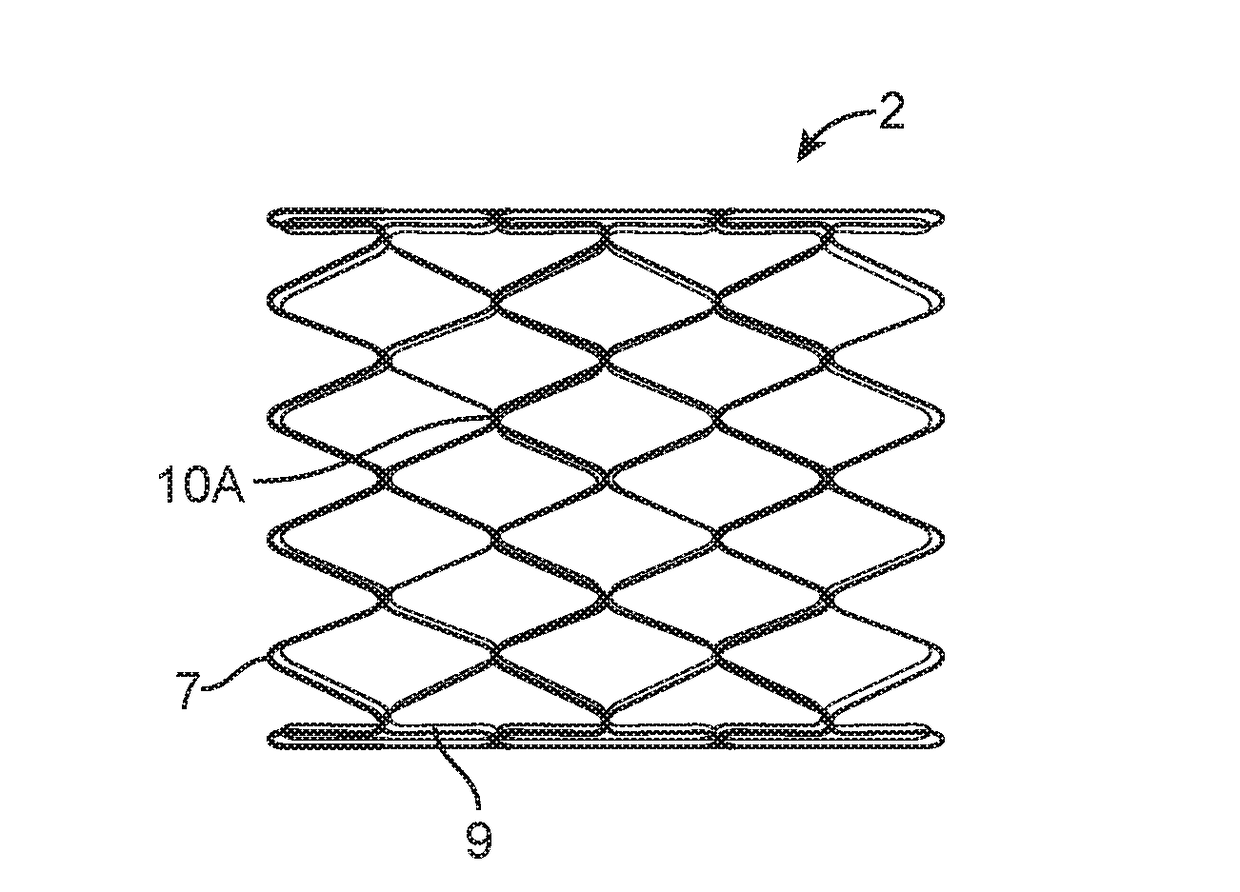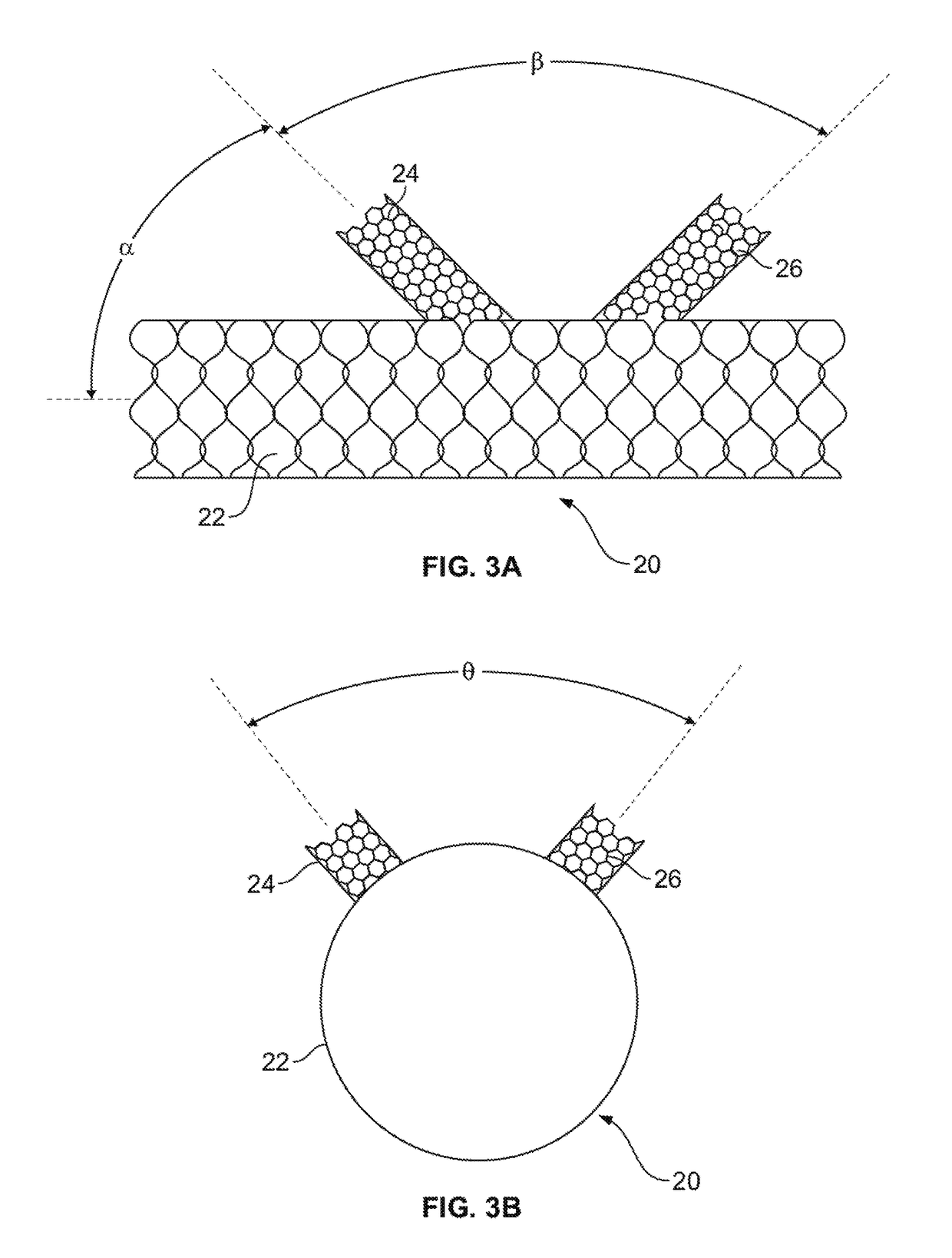Vascular implants and methods
a technology of vascular implants and vascular arteries, applied in the field of vascular disease treatment, can solve the problems of inability to adapt the system to small vessels, cumbersome and difficult to employ and execute, and the difficulty of aligning and interconnecting legs with the lumen with enough precision to avoid leakage, and achieve the effect of facilitating cellular integration of the devi
- Summary
- Abstract
- Description
- Claims
- Application Information
AI Technical Summary
Benefits of technology
Problems solved by technology
Method used
Image
Examples
Embodiment Construction
[0037]Before the devices, systems and methods of the present invention are described, it is to be understood that this invention is not limited to particular therapeutic applications and implant sites described, as such may vary. It is also to be understood that the terminology used herein is for the purpose of describing particular embodiments only, and is not intended to be limiting, since the scope of the present invention will be limited only by the appended claims.
[0038]Unless defined otherwise, all technical and scientific terms used herein have the same meaning as commonly understood by one of ordinary skill in the art to which this invention belongs. The term “implant” or “implantable device” as used herein includes but is not limited to a device comprising a stent, a graft, a stent-graft or the like. The terms “proximal” and “distal” when used with reference to the implantable devices of the present invention, these terms are to be understood to indicate positions or locati...
PUM
| Property | Measurement | Unit |
|---|---|---|
| diameter | aaaaa | aaaaa |
| length | aaaaa | aaaaa |
| diameter | aaaaa | aaaaa |
Abstract
Description
Claims
Application Information
 Login to View More
Login to View More - R&D
- Intellectual Property
- Life Sciences
- Materials
- Tech Scout
- Unparalleled Data Quality
- Higher Quality Content
- 60% Fewer Hallucinations
Browse by: Latest US Patents, China's latest patents, Technical Efficacy Thesaurus, Application Domain, Technology Topic, Popular Technical Reports.
© 2025 PatSnap. All rights reserved.Legal|Privacy policy|Modern Slavery Act Transparency Statement|Sitemap|About US| Contact US: help@patsnap.com



